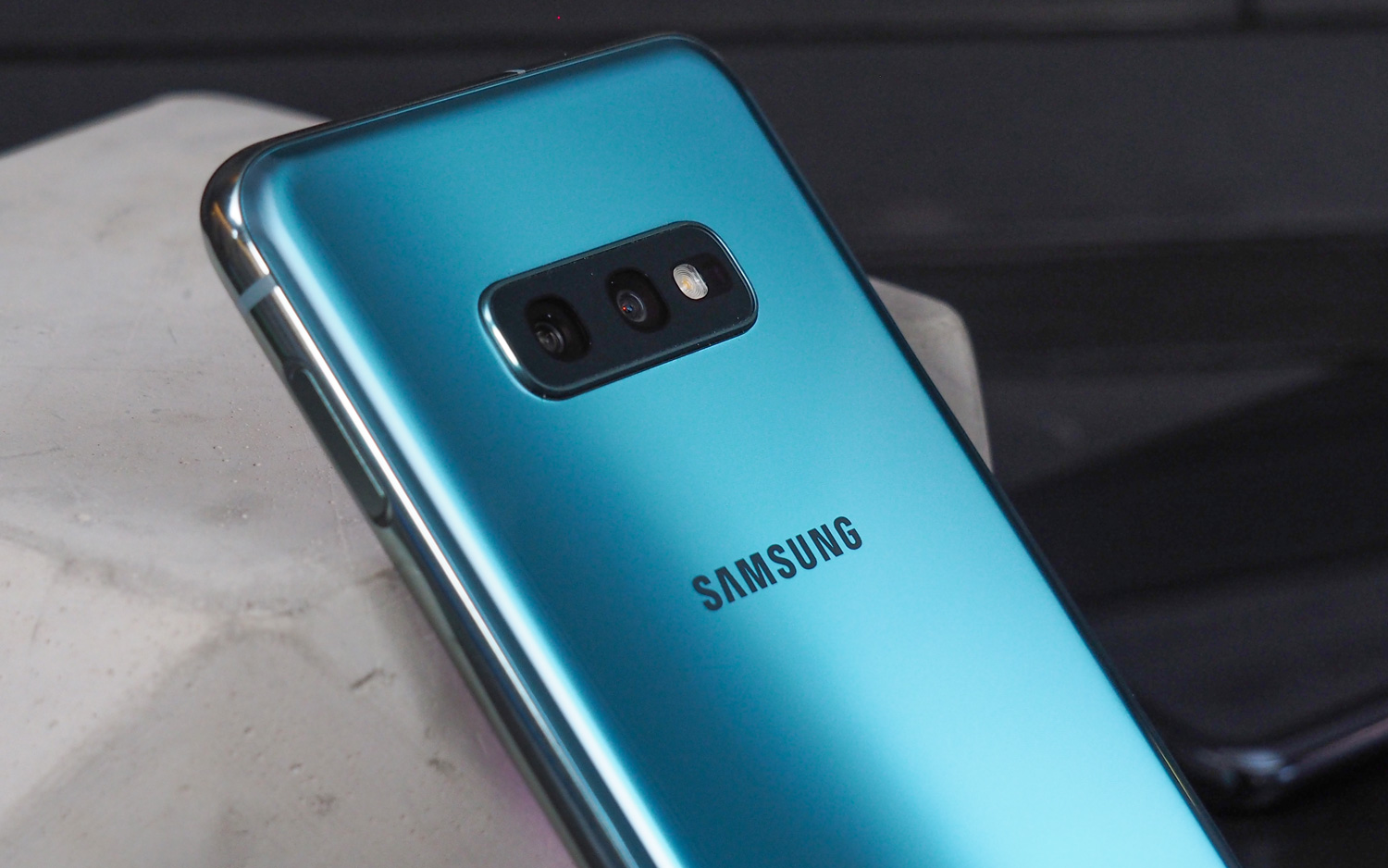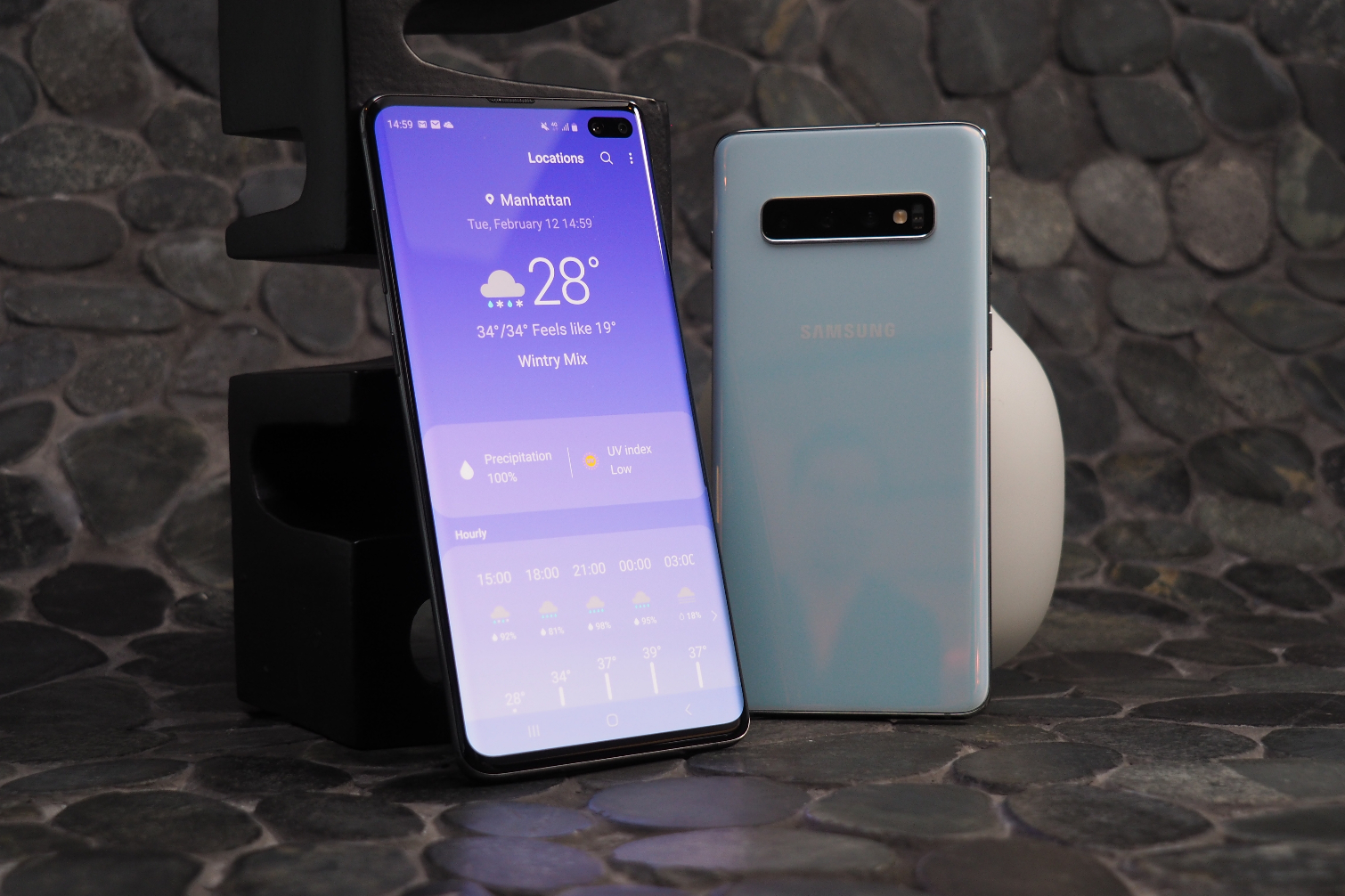Galaxy S10 vs. Galaxy S9: What's New and Different?
All the improvements you can expect
Released this past spring, the Galaxy S10 represents one of the biggest overhauls ever to happen to Samsung’s premium smartphones. There are not one, not two but a whopping four models, ranging from 5.8 to 6.7 inches, and as many as five cameras across the front and back in certain variants.
Both the Galaxy S10 Plus and Galaxy S10e have made our list of the best smartphones, but every handset in the lineup is worth a look.

Here's a closer look at some of the most prominent features in the Galaxy S10 versus 2018's Galaxy S9 and S9 Plus, with an eye toward what's changed with the year's phones. Also check out our Galaxy S10 vs S10 Plus vs S10e vs S10 5G face-off to see which new Galaxy is right for you.
Updated, Nov. 12: We've added updating pricing information and test results.
Design
There are more Galaxy models to choose from than ever before. After years of offering just two sizes — the 5.8-inch Galaxy S9 and the 6.2-inch Galaxy S9+ were 2018's entries — Samsung is selling four varieties of the Galaxy S10: the 5.8-inch S10e, 6.1-inch S10, 6.4-inch S10 Plus and 6.7-inch Galaxy S10 5G, all of which span a range of prices and features.
Another noteworthy change with the Galaxy S10 is the placement of the fingerprint sensor. Recent models have placed the sensor on the back of the phone to make more space for the phone's Infinity Display. But with the S10, the fingerprint reader moves back to the front of the phone in the form of an ultrasonic fingerprint sensor underneath the display.

There is one exception: Samsung's entry-level Galaxy S10e skips this feature in exchange for a lower price tag, putting the fingerprint reader on that model's power button.
Get instant access to breaking news, the hottest reviews, great deals and helpful tips.
Other phones have offered in-display sensors in the past — notably the OnePlus 6T, though it uses an optical scanner rather than an ultrasonic one. Based on our testing, the ultrasonic fingerprint sensor works well, but you need to press your finger on the sensor long enough for it to register.
Samsung used to play it pretty safe on colors, with the S9 debuting in Midnight Black, Coral Blue and Lilac Purple before a Gold variant arrived later. Colors got a little more daring with the Note 9, though thankfully the S10 continues that trend in a big way. There are no less than eight colors on offer between the three core models of Samsung’s flagship. (The 5G version of the S10 comes in Crown Silver or Majestic Black.)
There’s Prism White, Prism Black, Prism Blue and Prism Green, which won’t arrive in the U.S. Flamingo Pink is another new hue, based on Pantone’s color of the year, Living Coral. The S10e gets an exclusive Canary Yellow option that won’t see the States either. And, finally, the 512GB and 1TB storage variants of the S10+ come in a more luxurious (and durable) Ceramic Black and Ceramic White.
Display (and hole punch)
There's no denying that Samsung's Infinity Display has been a hit since it first graced the Galaxy S8 two years ago. Samsung is retaining that AMOLED screen with the S10, but with a slightly different kind of display.

With Samsung’s new Infinity-O approach to the S10’s display, Samsung is housing the phone's front camera in a hole punch located in the device's upper right corner. That allows the phone maker to shrink the bezel at the top of the phone without having to use an iPhone X-style notch. The S10 Plus sports an even wider hole to accommodate two front cameras. (The Galaxy Note 10, released after the S10 family debuted, moves the punch hole to the center of the display.)
Samsung does allow you to hide the front cameras and the hole punches by turning it into a black bar, but it's not very appealing.
The entry-level S10e model differs from the others somewhat in that it incorporates a flat display. It’s a departure from the curved panel we've gotten used to with Samsung's Galaxy S phones.
Performance
Samsung's new phones upgrade from the Snapdragon 845 inside the Galaxy S9 to Qualcomm’s new Snapdragon 855, at least for Galaxy S10 models sold in the U.S. (In other markets, Samsung uses its own Exynos chipset for the Galaxy S phones, with the Exynos 9820 powering this year's model.)
Based on our benchmarks of the entire Galaxy S10 lineup, Samsung's latest phones are quite fast. For example, the S10 Plus posted a score of 10,732 in Geekbench 4, which measures overall performance. The Galaxy S10 did slightly better with a 10,813 score.
When we tested the S10 family back in the spring, those were the fastest results we've seen from an Android phone, approaching the iPhone XS's score of 11,420. Of course, subsequent Snapdragon 855-powered Android phones have gotten faster, too, as have the iPhone 11 phones powered by Apple's new A13 Bionic chip.
Nevertheless, the S10 is decided faster than its predecessor. The Galaxy S9 Plus posted a score of 8,295 on Geekbench 4 when we reviewed the phone a year ago.
Don't think you're sacrificing performance if you opt for the S10e, which is running on that same Snapdragon 855. It scored 10,513 on Geekbench 4, just behind the S10 Plus. (Chalk up the small gap to the extra RAM in the S10 Plus model we tested.)

The S10 Plus' score of 5,648 on the graphics-measuring 3DMark Sling Shot Extreme test was better than what we saw from the Snapdragon 845-powered S9 and S9 Plus. And it also beat the iPhone XS (4,339) and every other Android phone we had tested up until that point. The Galaxy S10 was right behind its larger sibling with a 5,606 score.
The S9 offered 4GB of RAM while the S9 Plus upped the ante to 6GB. This time around, the S10 starts with 6GB of memory on the S10e, moves up to 8GB for the S10, and goes as high as 12GB of RAM for the range-topping configurations of the S10 Plus.
5G connectivty
The Galaxy S10 enjoys another performance edge over the S9, though only with one model. The Galaxy S10 5G supports next-generation 5G networks that wireless carriers are currently building out, taking advantage of the X50 5G modem included with the Snapdragon 855. That will mean faster data speeds when you're able to connect to a 5G network, as we discovered when testing the Galaxy S10 5G. At some test sites in Chicago, we saw download speeds topping 1 Gbps on Verizon's network.
The trouble is Verizon's network is limited to 15 cities as of this writing, and because it uses millimeter-wave technology, Verizon's network is limited to certain neighborhoods in a city. T-Mobile's 5G network launches in December, and will cover 5,000 cities, though with slower speeds than what Verizon has to offer. In other words, given that 5G is still in the early going, it's hard to justify the added expense of the Galaxy S10 5G over other S10 models.
Still, each of the Big Four carriers now sells the Galaxy S10 5G, after the phone initially debuted with Verizon. (AT&T only offers the phone to select customers, though.)
Cameras
While the S9 featured a single, 12-megapixel lens with variable aperture and the S9 Plus doubled up on its 12-MP shooters, all versions of the Galaxy S10 will feature multiple cameras on the back.
The primary shooter — a 12-megapixel, variable aperture lens backed by a dual-pixel sensor — is present on every model. The S10e adds an ultrawide-angle 16-MP secondary shooter. And the S10 and S10 Plus throw in a 12-MP telephoto lens for striking portraits.

At the front, all S10 models have a 10-MP dual-pixel camera, and the S10 Plus gets a secondary 8-MP depth sensor to allow for shallow depth-of-field selfies, too.
Finally, the Galaxy S10 5G gets a whopping four cameras on the back, adding a sophisticated time-of-flight 3D depth sensor to the trio of existing cameras on the back. The same 3D shooter replaces the 8-MP secondary camera you’d normally find on the front of the S10 Plus.
Just as the Galaxy S9 used its variable aperture to improve photos in low-light settings, the S10 turns to software to take better photos in the dark. The new phones can recognize 30 different scenes, more than any previous Samsung flagship, and adjust exposure parameters on the fly based on what it sees.
To see how well the Galaxy S10's camera performs, check out our camera face-off between the Galaxy S10 Plus and Pixel 3. The Pixel 3 out-performed the S10 in five of our eight tests and the Pixel 4 has only added further improvements to the camera. But we still include the Galaxy S10 Plus on our list of top camera phones, and it's a definite improvement over what you get from the Galaxy S9' cameras.
Battery
The S9 and S9 Plus came with 3,000- and 3,500-mAh batteries, respectively. Those helped the two phones last nearly 11 hours on our Tom's Guide Battery test, which features continuous surfing over T-Mobile's LTE network until the devices run out of power.
Samsung wanted to improve on that performance, and so the phone maker is turning to bigger batteries to make that happen. The size of that battery will depend on which model of the S10 you buy.

The entry-level S10e features a 3,100-mAh battery, which is a bit more than what the S9 included. But battery sizes will scale up to 3,400 mAh and 4,100 mAh on the S10 and S10 Plus models. The range-topping S10 5G will pack a 4,500 mAh unit to power its next-generation radios.
On our battery test, the Galaxy S10 Plus lasted a whopping 12 hours and 35 minutes, which far surpasses not only the Galaxy S9 Plus but also the Galaxy Note 9 and every flagship phone for the past year. That lands the Galaxy S10 Plus on the list of longest lasting smartphones. The S10e wasn't that impressive, turning in a time of 9:41 that's actually below average for smartphones. The S10 lasted a respectable 10:19.
All four S10 devices will be able to wirelessly recharge other devices with their own batteries, using a new feature Samsung has dubbed Wireless PowerShare. The feature is compatible with any other Qi-supported products, like Samsung's new Galaxy Buds, pictured above, and automatically turns itself off once the S10 drops down to 30 percent capacity.
Software
The biggest software change with the Galaxy S10 versus the Galaxy S9 is a new interface. Samsung unveiled its OneUI Android skin last year, and it's been added to the Galaxy S9 models as well as the S10 family. It’s a more dynamic interface that changes based on what you're using the phone to do; buttons and search bars disappear if they're not germane to the task at hand, for example.

But Samsung also tweaked OneUI to put many of the buttons and commands within reach of your fingers, so that you can use your phone one handed. That's critical for phones with larger screens, which the S10 lineup is expected to introduce.
Another plus: you can finally remap the Bixby button for other functions, though apparently you can't change it to Google Assistant.
MORE: Galaxy S10: Ten Features to Enable and Disable
Be aware that Samsung is updating its user interface once more for Android 10. The new version, One UI 2.0, is currently in beta and it's only open to the Galaxy S10 and not the S9.
Price
The S10 range begins at $749 with the 5.8-inch Galaxy S10e. For that price, you get 6GB of RAM and 128GB of storage. There’s an option for 8GB of RAM and 256GB of storage as well.
Galaxy S10e: Samsung's entry-level model costs $150 less than the Galaxy S10. It features just two-rear cameras and instead of an in-display fingerprint sensor, you get a fingerprint reader on the power button.
The 6.1-inch Galaxy S10 starts at $899 with 8GB of RAM off the bat, as well as 128GB of space for media and apps. You can upgrade to a 512GB model if you prefer.
Galaxy S10: With a starting price of $899, the Galaxy S10 features a triple-lens rear camera setup and the same blazing performance you get from the larger S10 Plus.
The 6.4-inch S10 Plus costs $999 for the same 128GB configuration. It also has a 512GB storage option as well as 1TB version. You can also bump the RAM to 12GB.
Galaxy S10 Plus: We think the Galaxy S10 Plus is the best of the new S10 models and the one to get if you can swing its $999 price.
The Galaxy S10 5G is the most expensive of the new models, even though it's not that much different from the Galaxy S10 Plus, save for the larger screen and 5G modem. Still, at $1,299, it's a $300 premium over the S10 Plus.
Under a current promotion, you can knock the cost off each new Galaxy S10 model by up to $350 when you trade-in your current phone. Be sure to check our best Galaxy S10 deals page to see the latest discounts.
As for the Galaxy S9 and S9+, their prices have fallen since the S10 arrived on the scene. The S9 costs around $599 these days, and the S9+ costs $699, though you can find lower prices at many retailers, especially if you don't mind turning to used models. Samsung is offering a $160 rebate on its older phones when you trade in a current handset. We still monitor Galaxy S9 deals, too.
Bottom Line
With U.S. smartphone sales slowing as more people hold on to their current phones for longer, Samsung faced a challenge with the Galaxy S10 launch: Come out with a device that not only improves upon what's come before it, but also differs substantially so that users feel compelled to upgrade.
Are the changes from the Galaxy S9 enough to convince people to upgrade to Samsung's new phone? For early adopters, perhaps. Based on our testing, we think the Galaxy S10 is a better bet for people who own a Galaxy S8 or older device. And if you're looking for a bargain phone, the still-powerful Galaxy S9 remains a compelling option.
Philip Michaels is a Managing Editor at Tom's Guide. He's been covering personal technology since 1999 and was in the building when Steve Jobs showed off the iPhone for the first time. He's been evaluating smartphones since that first iPhone debuted in 2007, and he's been following phone carriers and smartphone plans since 2015. He has strong opinions about Apple, the Oakland Athletics, old movies and proper butchery techniques. Follow him at @PhilipMichaels.




